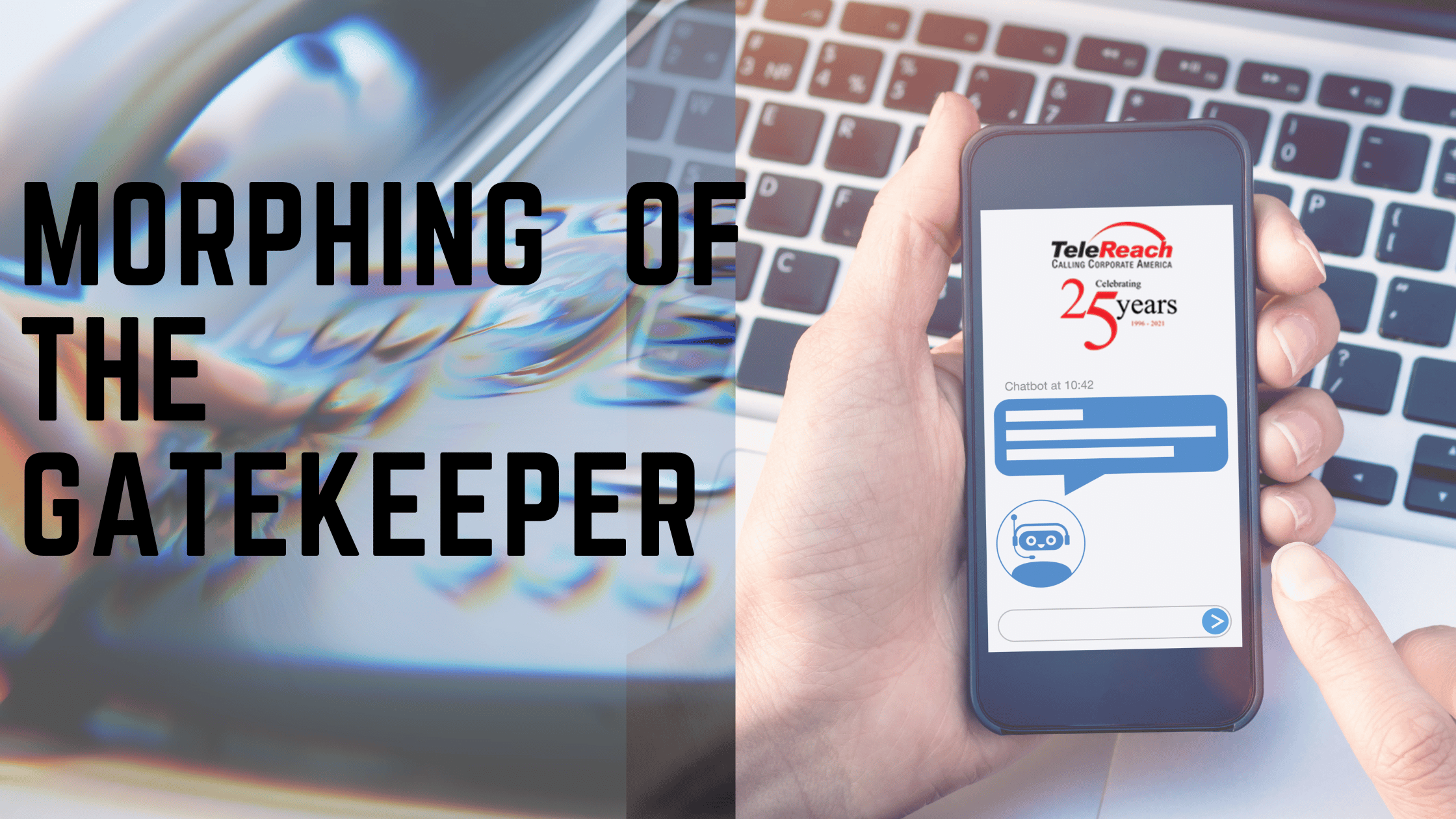
Traditionally, a gatekeeper is a person who controls access to someone who is a decision maker. Perhaps the concept evolved from ancient times, when gatekeepers were people, large scary souls who played a key role in keeping order and security in society by keeping the ‘bad people’ out. Cities had great walls with intimidating gatekeepers who protected cities, palaces or temple gates from invaders or wild beasts.
In the last 25 years since we at TeleReach Corporate began the journey into the world of outbound business to business cold calling, gatekeepers have morphed greatly. Over that time, getting through the gatekeeper has been a frequently discussed topic within sales organizations. Today, that topic is as relevant as ever, as gatekeepers have changed over time, and never as rapidly as in the last year and a half.
In a way, all work in a business is structured around the idea of “gatekeepers.” Gatekeepers, with various titles, can be found throughout most levels in an organization. Many high-level executives have an executive assistant. In order to get a meeting with such a high-level person, you need to go through the gatekeeper/assistant. The assistant may well know that you’re not a person relevant enough to get a meeting and screens you out. One can make a strong argument that within any hiring process, the HR department primarily functions as a gatekeeper. One could make a similarly strong argument that, within the broader flow of an organization, middle managers exist as gatekeepers – they may say “No,” but are able to say “Yes.” The point is, to get anywhere at most businesses/organizations, one needs to understand who the gatekeepers are and how to get through them in the most effective way possible.
In the beginning, the question for sales was mostly about ‘who are the gatekeepers’ – because gatekeepers were living, breathing humans. Then technology made it more about ‘what are the gatekeepers’ – with the increase in voice mail, caller ID and direct dial phone systems. Now, because of COVID, the newest question to add is ‘where are the gatekeepers? Yes, cold calling still works, but it doesn’t work the same way, and getting through the gatekeeper often does not mean through a main line that is answered by a human receptionist in an office setting.
Where are the Gatekeepers?
Given the choice, I would rather listen to the traditional complaining about self-appointed decision making by gatekeepers who say “our company isn’t interested” than the new complaints about companies not answering their phones because their doors are closed or they are working remotely. Certainly, no one wants the future to be gatekeeper ghosts or business ghost towns. Although businesses are finally returning to their physical office environments, the way we reach decision makers has probably changed forever and now includes more ways and new ways; the old way of navigating main lines and gatekeepers but also cell phones, LinkedIn, email, voice mail, direct lines and others.
Throughout the pandemic, many companies have remained operational, doing business as usual from an office. Others may have moved to a hybrid work environment where some of their people are working remotely, or where all of the people are working remotely. Now, because of the tumultuous changes in how people are working brought on by the pandemic, the newest way to reach decision makers is to call them on their cell phones or direct lines. To business people, communication is vital, so many have solved the gatekeeper issue by switching to using their cell phones while working from home. That’s the modern way of getting through the gatekeeper, because there may not even be a gatekeeper.
Who are the Gatekeepers?
In the past, a gatekeeper could be a receptionist or department level assistant…anyone who blocks the path to reaching a decision maker. Their job was to screen unwanted calls or people from reaching their bosses.
So, when gatekeepers were reliably human, traditional gatekeeper cold call training was about strategies to get past, go around, or avoid the gatekeeper altogether. They were simple, basically common-sense guidelines, such as:
Treat the gatekeeper with respect;
Keep your cool;
Speak with confidence
Be friendly and engaging;
Use first names;
Be honest about your call;
Ask to leave a voice message.
Then the Question of ‘Who’ Morphed into ‘What’ are the Gatekeepers?
Non sentient gatekeepers, such as voice mail, caller ID and direct dial phone systems, while offering desired advantages to those executives for whom they screen, made the challenge of reaching the decision maker harder and inadvertently gave the rest of us pangs of nostalgia for the days of human gatekeepers. Voice mail can be ignored, Caller ID can be used for screening, direct dial phone systems require knowing the direct dial number or getting lost through the main switchboard.
Today, Added to the ‘Who’ and the ‘What’ is the ‘Where.’
Gatekeepers may be real or virtual, or absent entirely. If human, they may be located in the office, or remote. If digital, they are by definition remote, and immune to the prior, common-sense rules. As we work through the pandemic, will the concept of the human gatekeeper disappear and be replaced with AI and direct digital connections? Or, will it stay in this hybrid model of human/office and digital/remote? Or, will there be further morphing that makes accessing the decision maker even more difficult?
Whichever of these scenarios comes to pass in the future, only two things can be counted on. First, that the need for a sales team to reach and engage decision makers will always be critical and will never decline. Every business is driven by a successful sales team. And every successful sales team is defined by its ability to connect with the prospects who make the final sales decisions.
Second, that change is constant. However the gatekeeper process works now, you can trust that it will change. And that means anticipating and responding to changes as they happen. Sales appointment setting will continue to be a critical function in optimizing a sales team’s time, and setting appointments through telemarketing will continue to be an essential part of the sales process.
About the Author

Tracie Chancellor, CEO and Founder of TeleReach Corporate, national business to business call center specializing in sales appointment setting and lead generation, based in Houston, Texas. Chancellor is an MBA graduate of the University of Houston with over 20 years hands-on sales and marketing experience, working with privately-held businesses, universities, non-profit organizations, as well as Fortune businesses in the business to business marketing space.

